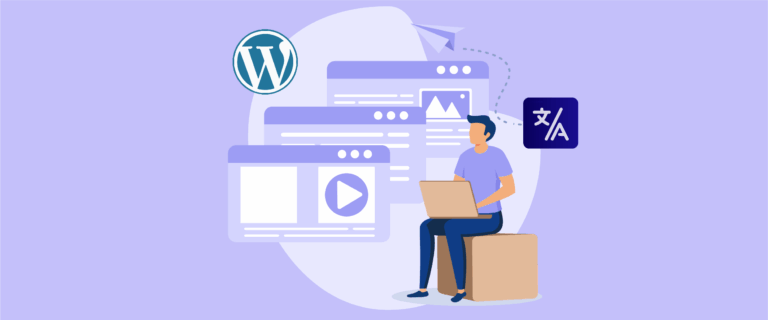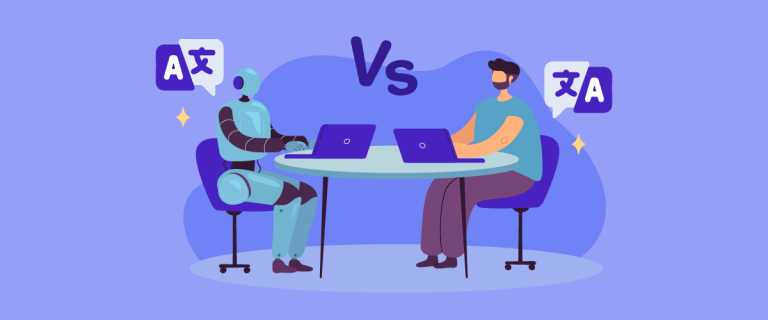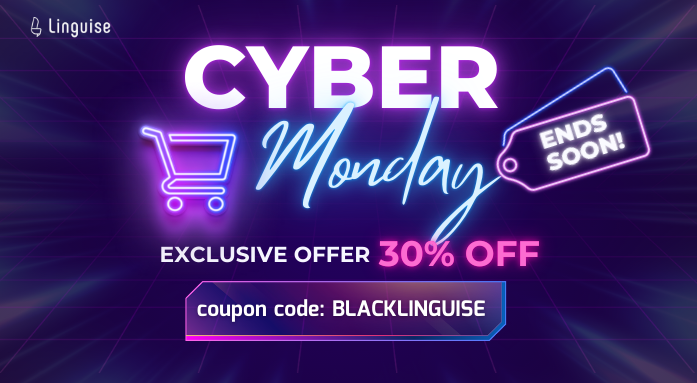Translating dynamic content in multilingual online courses has become a critical priority as more and more students access education in different regions and languages. Unlike static text, elements such as videos, quizzes, user-generated discussions, and real-time interactions require flexible strategies to remain engaging and accurate in every language.
The success of multilingual e-learning depends on how well these dynamic components are planned, translated, and maintained over time. This article will discuss best practices for planning, translating, and managing dynamic content to keep the learning experience consistent across languages.
Why translating dynamic content in multilingual courses matter?
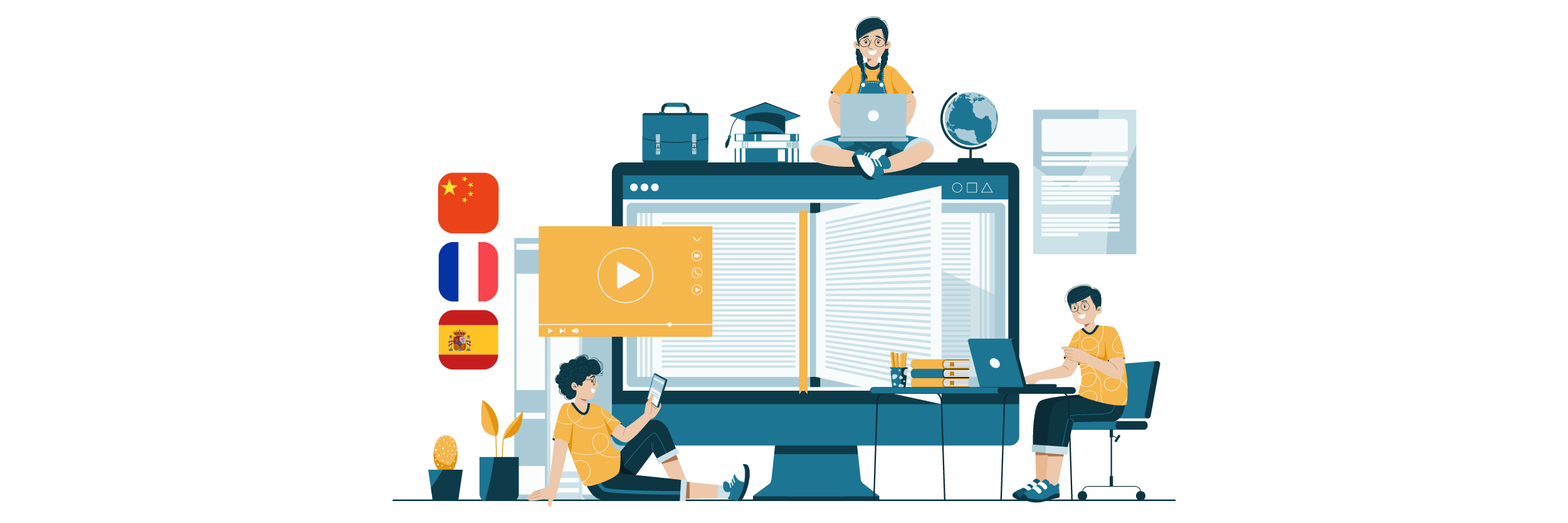
Translating dynamic content in multilingual courses is essential to deliver equal learning experiences for learners across different languages. Unlike static materials, dynamic elements change frequently and directly influence how learners interact with the course. Here are the key reasons.
- Equal accessibility: When videos, quizzes, or live discussions aren’t appropriately translated, learners who speak other languages may fall behind or miss important information.
- Higher learner engagement: Dynamic content that matches the learner’s language and cultural context encourages participation and improves motivation.
- Consistent learning quality: Inaccurate translations of instructions, terminology, or interactive elements can lead to confusion and inconsistent learning outcomes.
- Scalability for global audiences: e-learning platforms that aim to reach international users must ensure each language version offers the same quality and experience.
By translating dynamic content effectively, course creators can maintain consistency, improve inclusivity, and expand the reach of their learning programs across regions.
Planning translation for dynamic content
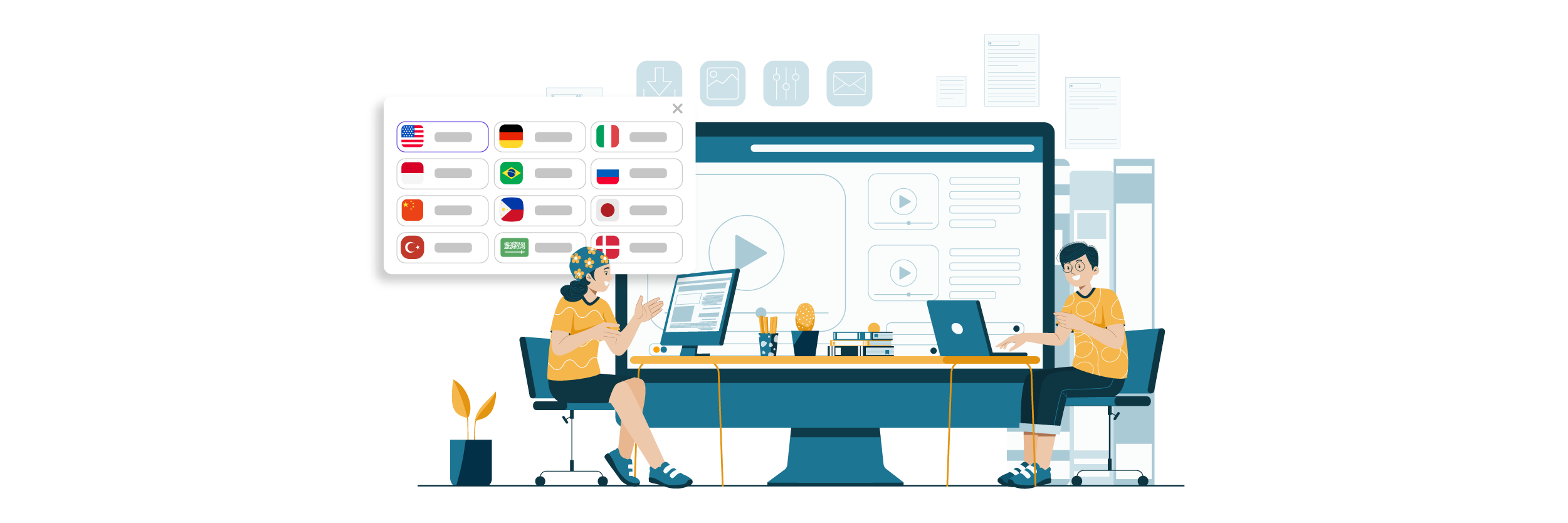
Before translating course content, it’s important to have a clear and structured plan. Dynamic elements like videos, quizzes, discussion forums, or frequently updated materials require a different approach compared to static content. With proper planning, the translation process becomes more efficient and accurate, and it doesn’t disrupt the learning experience across different languages.
Identifying content types (video, quizzes, ugc, real-time elements)
The first step is to identify all types of dynamic content in the course. For example, videos may require subtitles or dubbing, while quizzes need adjustments to terminology, instructions, and scoring formats. User-generated content (UGC), such as comments, forums, or assignments, needs a different strategy because it appears unpredictably and isn’t static.
Real-time elements like live sessions, chat, or instant discussions also add their own challenges. These types of content move quickly and can’t always be handled manually. By identifying all content types early on, the team can choose the right approach for each element and avoid confusion in the translation process.
Defining target languages and prioritizing materials
Not all content needs to be translated into every language at once. Defining target languages early helps focus time, effort, and budget on the languages most relevant to learners. For example, if most users are from Southeast Asia, languages like Indonesian, Thai, or Vietnamese may take priority.
In addition to choosing languages, it’s important to set material priorities. Core content like main modules, key quizzes, or introductory videos should usually be translated first before supplementary elements. This way, learners in different languages can still follow the course flow even if some parts are translated later.
Building an adaptive translation workflow
Because dynamic content can change at any time, the translation workflow needs to be flexible. This means having a process that supports regular content updates without starting from scratch. For example, you can use a content management system or translation management system (TMS) that detects small changes and only translates updated sections.
An adaptive workflow also includes clear task division between human translators, automation tools, and reviewers. With an organized flow, translation can move quickly without sacrificing quality. It also ensures content updates don’t delay access for learners in different languages.
Translation strategies for each content type

Dynamic content can’t be translated with a one-size-fits-all method. Each format, whether it’s video, quizzes, user interactions, or live sessions, has its own technical and linguistic needs. By using the right strategy for each type, you can maintain clarity, accuracy, and a seamless learning experience across all languages.
Video (subtitles, dubbing, and audio synchronization)
For videos, subtitles are the most common and cost-effective translation method. They allow learners to access the original audio while reading translated text. To keep subtitles effective, timing must be accurate, and the translation should follow the tone and context of the speaker.
Dubbing is another option when you want a more immersive experience, especially for learners who prefer audio over reading. This requires voice-over talent and proper alignment with the original timing. If voice tracks are replaced or layered, audio synchronization becomes important to ensure the translated version stays in sync with visuals and speech.
Quizzes & assessments
Quizzes and assessments require more than direct translation, they include instructions, answer options, scoring formats, and sometimes cultural nuances. The key is to keep the meaning of each question consistent across all languages so learners don’t feel confused or disadvantaged.
The scoring system also needs to remain unchanged. Whether the format involves multiple choice, fill-in-the-blank, or drag-and-drop, the translation shouldn’t increase or reduce the difficulty. Whenever possible, a quick review or small-scale testing in the target language can help spot any misunderstanding before the quiz is published.
User-Generated Content (UGC)
UGC appears in forums, comment sections, assignments, or peer feedback. Since it’s unpredictable and constantly changing, automated translation can be used as a first step. However, moderation is essential to ensure that sensitive or unclear content is handled correctly.
Contextual translation becomes important when tone or meaning could be misread. A hybrid approach, using machine translation followed by human review for flagged content, can help maintain accuracy while keeping the process efficient. Setting language filters, glossary rules, and reporting options can also improve content quality.
Real-time elements (chat, discussions, live sessions)
Real-time content needs fast translation to avoid disrupting the flow of communication. For live chat or discussion boards, built-in automatic translation tools can help users interact in their preferred language instantly. These tools should support two-way translation so learners can both send and receive messages seamlessly.
For live sessions like webinars or virtual classrooms, real-time captioning or live interpreters can be used. If real-time translation isn’t possible, providing key summaries or translated transcripts afterwards is a good fallback. The key strategy is balancing speed and clarity so learners don’t feel left behind during interactions.
Managing and implementing translations

Once the strategy is set, the next step is making sure the translation process runs smoothly both technically and operationally. Proper management ensures that translated content is accurate, easy to apply, and can be updated without disrupting the course.
Integration with LMS, CMS, or e-learning platforms
Every e-learning platform has its own structure and workflow. That’s why translation integration should be tailored to the LMS or CMS being used, such as Moodle, Canvas, Blackboard, or custom platforms. Good integration allows language management directly within the system, without the need to copy or move content manually.
With proper integration, both static and dynamic content can be assigned by language, displayed based on user preferences, and updated without breaking the course structure. This also helps both technical and non-technical teams work more efficiently when distributing multilingual materials.
Using translation tools and human review
The translation process becomes more effective when technology is combined with human oversight. Translation tools help speed up the work, especially for large volumes of content or frequently updated elements. Solutions like Linguise translation offer automatic integration for websites and LMS platforms while keeping the content layout and performance intact.
Even so, human review remains essential to ensure accuracy, context, and tone match the target audience. This hybrid approach helps translations feel natural, not overly literal, while preserving educational intent.
Content versioning and continuous updates
Since online courses are dynamic, content can change at any time, whether it’s revised modules, new materials, or updated quizzes. This is where versioning becomes important. By tracking content versions, teams can see which parts have already been translated, which are newly updated, and which need adjustments.
Ongoing updates ensure that learners in every language can access the latest material without delays. It also helps maintain consistency across languages, especially when changes affect key elements like instructions, videos, or assessments.
Best practices for translating dynamic content in multilingual online courses
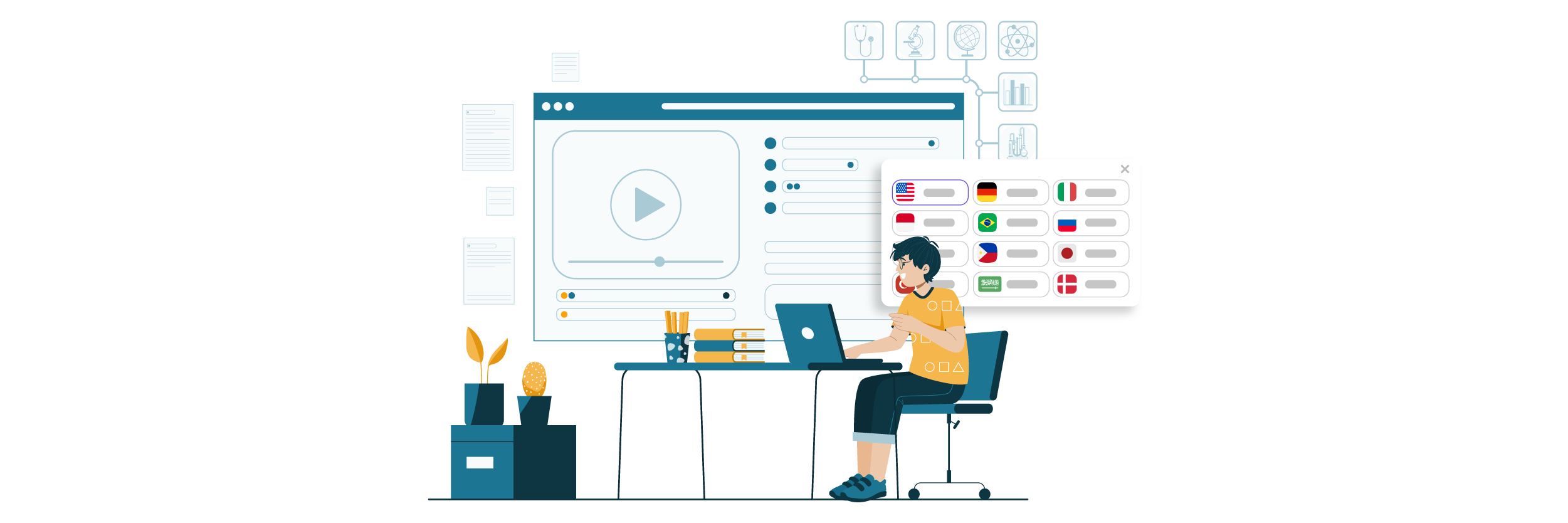
To make multilingual courses effective, translation alone isn’t enough. The content must be consistent, user-friendly, technically stable, and aligned across all teams involved. These best practices help ensure that learners in every language receive the same quality, experience, and engagement.
Maintaining consistency in terminology and tone
Consistency in terminology helps learners clearly understand key concepts without confusion. Using different words for the same idea across modules or languages can cause misunderstanding and affect learning outcomes. A shared glossary or termbase ensures that translators, reviewers, and course teams use the same vocabulary.
Tone is equally important, especially in educational content. The language style should remain aligned with the course’s target audience, whether formal, conversational, or instructional. Consistent tone makes the learning experience feel cohesive and professional.
Example: An online coding course might decide to consistently use the word “function” instead of mixing it with “method” or “operation” across translations. Creating a shared glossary for terms like “loop,” “syntax,” and “compiler” ensures clarity in all languages.
Optimizing user experience and interface across languages
A good translation should not disrupt the learner’s interaction with the platform. Some languages are longer or shorter than others, which can affect layout, button sizes, and text wrapping. Ensuring UI elements remain readable and accessible in every language supports a smooth learning experience.
Navigation, labels, and instructions also need to be easy to understand. If learners struggle to find menus, submit assignments, or access videos due to translation issues, their progress can be affected.
Example: When translating from English to French, interface text often becomes longer.
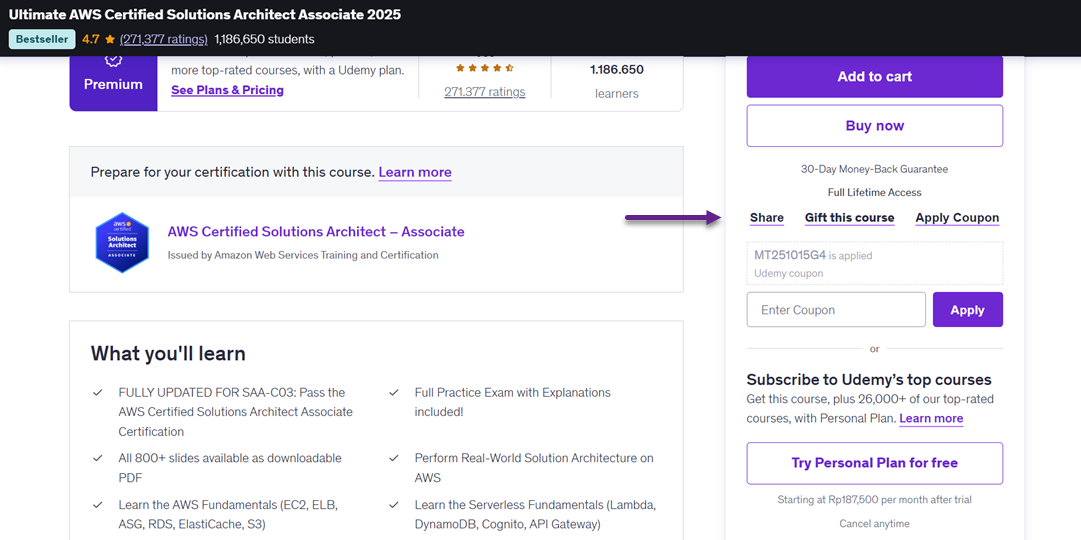
Adjusting button width or enabling dynamic text wrapping can prevent misalignment on dashboards, quizzes, or navigation menus. Here is an example that has been translated into French and contains expansions in the text.
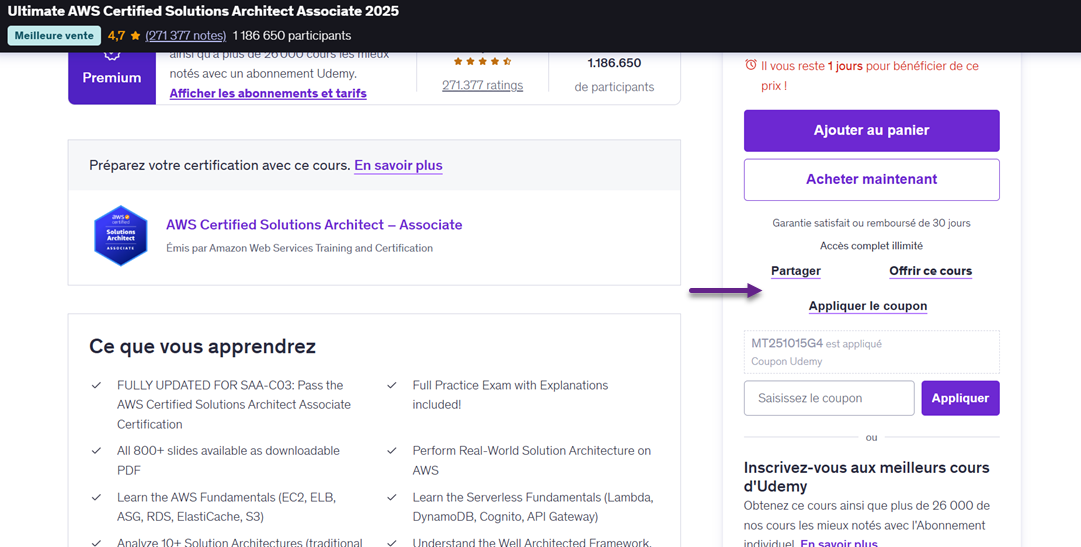
Ensuring platform performance and scalability
Adding multiple languages should not slow down the learning platform. Poor performance, such as slow page loads, broken links, or heavy scripts, can frustrate learners. Translations need to be managed in a way that doesn’t overload the system.
Scalability is also key, especially when more languages or courses are added in the future. Using proper caching, CDN support, and lightweight translation integrations helps maintain speed across regions.
Example: A platform using real-time translation widgets or plugins should ensure they don’t delay content loading. Caching translated pages and using lazy loading for media can keep performance stable even with five to ten languages enabled.
Collaborating with creators, developers, and localization managers
Translating dynamic content is not the job of one person—it requires teamwork. Course creators know the learning objectives, developers manage platform structure, and localization managers handle translation quality. Collaboration ensures that each element is translated correctly and functions well.
Clear communication channels prevent delays and misunderstandings. Sharing reference files, glossaries, and platform guidelines keeps everyone aligned on goals and standards.
Example: A weekly sync between instructional designers, translators, and the tech team can help solve issues like untranslatable interface text, unclear quiz wording, or video subtitle timing before content goes live.
Testing and quality assurance for translated dynamic content
Before launching a translated course, testing is essential to catch errors in language, layout, and functionality. This includes checking subtitles, quiz logic, real-time chat display, UI alignment, and interactive components. Quality assurance prevents learners from encountering broken elements or confusing translations.
Testing should involve both linguistic and functional review. Automated checks help detect missing strings, while human testers ensure meaning and usability remain intact.
Example: Before publishing the Spanish version of a course, a reviewer tests a quiz to confirm that hints, answer validation, and score feedback appear correctly in Spanish and don’t break the layout.
Monitoring and continuous improvement

To keep multilingual courses effective and relevant, you need to monitor how well they perform and improve them over time. This ensures learners in every language get a consistent and high-quality learning experience.
Collecting multilingual user feedback
Gathering feedback from users in different languages helps you understand their real experience. Learners can point out translation issues, unclear terms, or cultural mismatches that might not be obvious during production. This direct input makes it easier to identify what needs refinement.
You can collect feedback through surveys, in-app forms, or support channels. The goal is to listen to users in their own language so you can improve clarity, tone, and usability. When learners feel heard, they are more likely to stay engaged and complete the course.
Analyzing course performance by language
Looking at performance data by language helps you see which versions are working well and which need attention. Metrics like completion rates, quiz results, and time spent on modules can reveal language-specific challenges. This is especially important when dealing with mostly spoken languages such as English, Mandarin Chinese, Spanish, Hindi, or Arabic, since these audiences often represent a large portion of your learners.
If one language has lower engagement or higher drop-off, it may indicate unclear translations or cultural gaps. Identifying these patterns early allows you to make targeted improvements instead of guessing what went wrong and ensures that high-demand languages receive proper attention and refinement.
Updating workflows for future content
Once you know what works and what doesn’t, you can update your content creation and localization process. This may include refining translation guidelines, improving collaboration, or adding extra review steps for specific languages.
By adjusting workflows based on honest feedback and performance data, future content becomes easier to manage and more accurate. Over time, this leads to faster production, better quality, and a smoother learner experience across all languages.
Conclusion
Translating dynamic content is essential for delivering equal and engaging learning experiences across multiple languages. When elements like videos, quizzes, live discussions, and user-generated content are localized properly, learners can interact with the course without confusion or language barriers. This not only boosts accessibility but also ensures consistent quality for global audiences.
To keep multilingual courses effective over time, you need the right mix of workflow planning, translation tools, and ongoing improvements. A combination of automation and human review helps maintain accuracy while speeding up updates. If you want to simplify translation management across platforms and languages, integrating a solution like Linguise can make the process faster, scalable, and easier to maintain.



